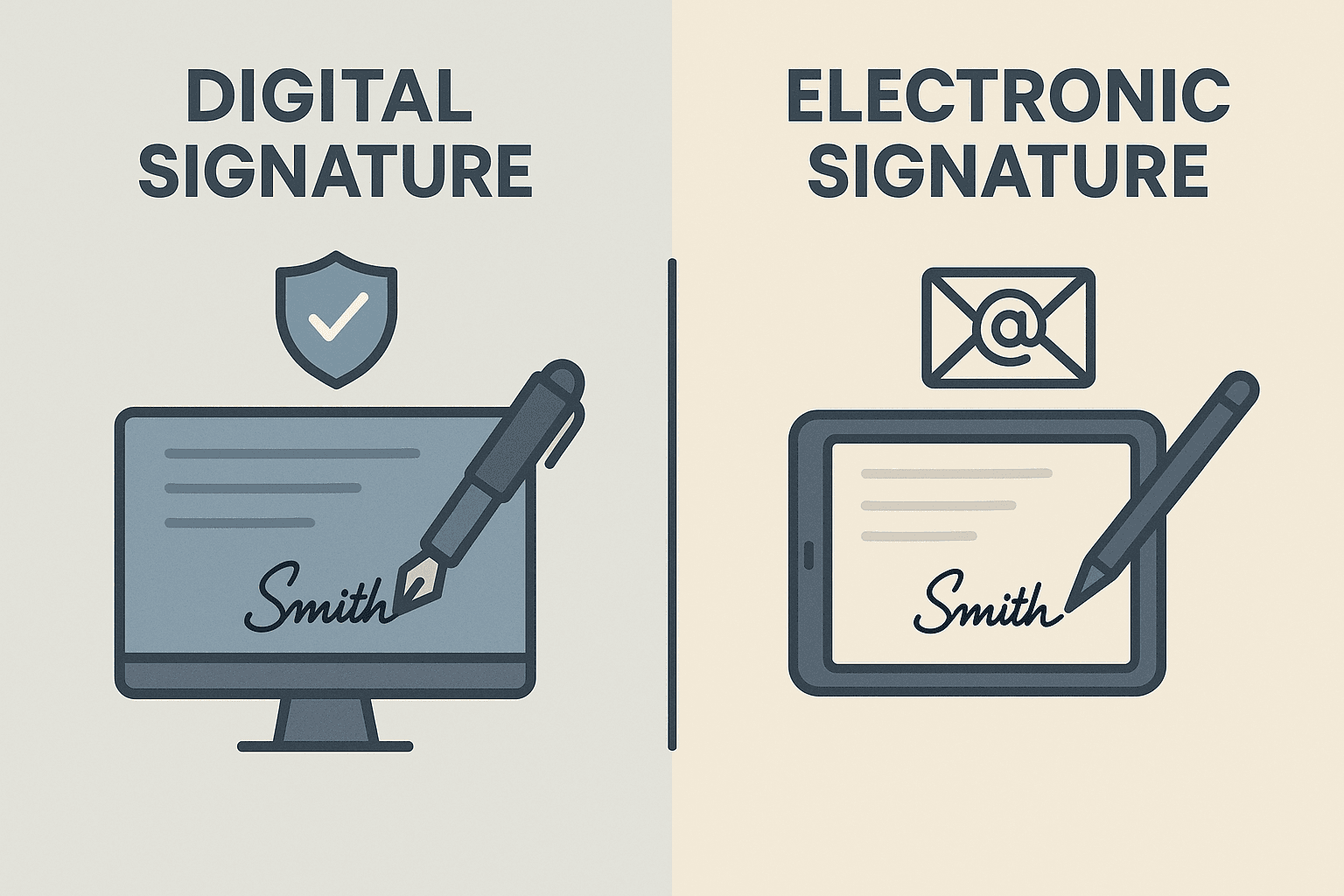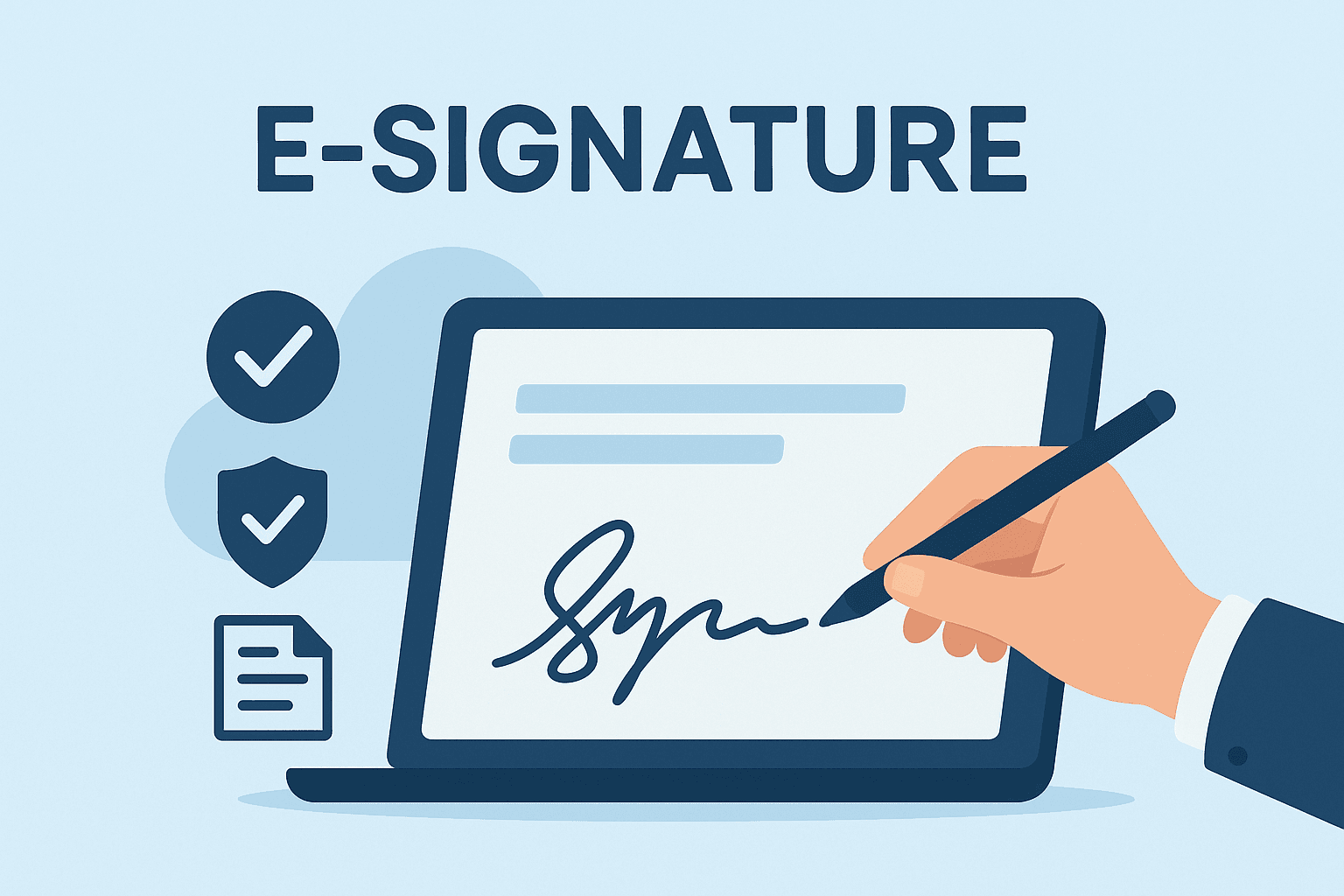WhatsApp or email with our sales team or get in touch with a business development professional in your region.
Digital Signature vs Electronic Signature: What’s the Difference?





As digital transformation accelerates, enterprises are raising the bar for signing methods across contract management, workflow automation, and compliance governance. Yet many organizations still conflate electronic signatures with digital signatures in practice—a misconception that can create operational risk and even undermine compliance in litigation. Understanding the fundamental differences has become a critical pillar of information compliance and document governance.

Foundational Definitions and Technical Architecture
An electronic signature (e‑signature) is a broad concept: any electronic method of expressing intent to sign—such as clicking “I agree,” typing a name, or uploading an image of a handwritten signature. Under the UNCITRAL Model Law on Electronic Signatures, any electronic method that can reasonably identify the signer and indicate approval of the document may constitute an electronic signature.
By contrast, a digital signature is a technical subset of e‑signatures and is far more rigorous in cryptographic terms. It relies on Public Key Infrastructure (PKI) and algorithms such as RSA or ECC to assure identity and data integrity. Digital signatures not only verify who signed but also provide tamper evidence: any modification to the document is detected at verification.
This distinction is especially consequential in high‑compliance sectors such as financial services, government, and healthcare. In Singapore and South Korea, for example, regulators require traceable digital signatures—not just generic e‑signatures—for certain high‑value documents.
Compliance Standards and Regional Variation in Practice
The legal effect of a signature depends on jurisdiction. In China, the Electronic Signature Law differentiates between ordinary e‑signatures and reliable e‑signatures; the latter—akin to digital signatures—must meet requirements for identity assurance, document verifiability, and signer exclusivity. This contrasts with the technology‑neutral approach of the EU’s eIDAS, the U.S. ESIGN Act, and UETA.
In Southeast Asia, countries such as Indonesia and Malaysia have invested heavily in electronic identity programs and national PKI initiatives, promoting regulated use of digital signatures. Enterprises expanding into these markets should ensure their solutions are designed to local law and support trusted timestamps, certificate‑chain archiving, and related server‑side controls.
In short, e‑signatures enable rapid deployment and convenience, but when facing cross‑jurisdictional compliance challenges, digital signatures deliver the enforceability and auditability that matter most.
Risk Control and Technical Implementation by Use Case
For CIOs and security leaders, choosing between e‑signatures and digital signatures is not merely a technical selection—it is a risk‑management decision.
In retail and internet businesses, e‑signatures typically suffice for customer agreements and registration flows. But in B2B contracting, IPO disclosures, and financial statement attestations, both security pressure and regulatory scrutiny increase substantially. Numerous cases show that client‑generated, image‑based e‑signatures cannot reliably prevent identity spoofing and may struggle to achieve full acceptance by courts and regulators.

Conversely, mainstream digital‑signature solutions—such as Adobe Acrobat Sign, DocuSign, and China’s Esign (e签宝)—integrate with licensed certificate authorities (CAs) so that every signing action is backed by a traceable digital certificate, private‑key protection, and a trusted timestamp. This foundation also enables interoperability and mutual recognition between platforms and has demonstrated value in accelerating cross‑border trade contracts and related regulatory filings.
Deployment Strategy: Balancing Risk, Efficiency, and Cost
In practice, enterprises should implement a multi‑tier signature strategy aligned to business complexity. For medium‑sensitivity scenarios, strengthen e‑signatures with multi‑factor authentication and audit trails. For critical documents where functionality and compliance are both paramount, prioritize a digital‑signature architecture aligned with ISO/IEC 32000 (PDF).
From a cost perspective, digital signatures typically entail higher upfront investment—certificate management, hardware security modules (HSMs), and compliance operations. However, across the full lifecycle, that investment reduces compliance exposure, dispute resolution costs, and data‑breach risk.
Given the rapid growth of East Asian markets, partner with local trusted service providers (TSPs) to raise trust levels and local compliance coverage. For example, Japan is advancing e‑authentication linked to the My Number system, while China is promoting electronic contracts + trusted timestamps for compliant record‑keeping—fertile ground for the expansion of digital‑signature capabilities.
Strategic Takeaway: From Compliance Requirement to Enterprise Asset
While optimizing signing workflows, treat your signature stack as a trust asset. E‑signatures deliver speed and convenience; digital signatures deliver verifiable security and legal defensibility. They are not competitors but complements in a balanced design.
For enterprises with international footprints or multi‑industry ambitions, building a digital‑signature‑anchored trust framework will be a cornerstone of compliant digitalization—mitigating policy risk and elevating organizational credibility. Companies that balance policy, technology, and operational standards across e‑signature and digital‑signature options will gain an early lead in the global compliance landscape.

Shunfang
Head of Product Management at eSignGlobal, a seasoned leader with extensive international experience in the e-signature industry.
Follow me on LinkedIn
Get legally-binding eSignatures now!
30 days free fully feature trial
Business Email
Get Started
 Only business email allowed
Only business email allowed
Latest Articles


